Mass Spectrometry Proteomics

About Mass Spectrometry Proteomics
Traditional methods for mass spectrometry-based proteomics, such as SILAC (stable isotope labeling with amino acids in cell culture), are insensitive, poorly reproducible, costly, and time consuming. LifeSensors’ TUBEs bind to all polyubiquitin chains with 1-10 nM affinity, overcoming major problems common to mass spectrometry proteomics. LifeSensors has developed K63-, K48-, and M1(linear)-chain selective TUBEs. LifeSensors is actively engaged in developing K6, K11, K29, K27, and K33 polyubiquitin chain-selective TUBEs. The combination of the TUBE-based affinity technology and targeted mass spectrometry is the most powerful way to detect the alternations in PMTs and identify signatures for research and biomarkers. LifeSensors’ ubiquitin proteomics technology can detect ultra-low levels of ubiquitylated biomarkers from tissues and cells.
Mass Spectrometry Service

TUBE-Based Mass Spectrometry Proteomics
Tandem Ubiquitin Binding Entities (TUBEs) are powerful reagents for enrichment of polyubiquitylated proteins. At LifeSensors, we have used the remarkable technology of TUBEs with our mass spectrometry expertise to provide the customer with a quick and easy way to perform both qualitative and quantitative proteomics. Upon completion of the analysis, you will receive a list of peptides and corresponding proteins that have been identified. We will categorize the ubiquitylated proteins and display the results on several plots to make your analysis easier. This information will help you publish your results or plan your next assay.
Tandem Ubiquitin Binding Entities (TUBEs) are powerful reagents for enrichment of polyubiquitylated proteins. At LifeSensors, we have used this remarkable technology of TUBEs with our mass spectrometry expertise to provide the customer with a quick and easy way to perform both qualitative and quantitative proteomics. Upon completion of the analysis, you will receive a list of peptides and corresponding proteins that have been identified. We will categorize the ubiquitylated proteins and display the results on several plots to make your analysis easier. This information will help you publish your results or plan your next assay.
We are here to help you from the beginning, and are happy to sit down and help you design the best experiment to address your specific questions. We have competitively priced our analysis and offer custom services with the level of analysis that matches your needs and budget. We strive to deliver you accurate and professional reports quickly. From submission of samples reports are typically delivered in 2-4 weeks depending on the complexity of project. Please contact us for a more accurate timeline for your specific experiment.
TUBE-based enrichment of polyubiquitylated proteins has proven key for the progress of ubiquitin proteomics. LifeSensors has developed the proprietary technology to identify cellular proteins that are ubiquitylated using TUBE-based proteomics. A brief overview of this technology is depicted in the following figure:
See Sample Report
LifeSensors’s pan (TUBE1 and TUBE2) as well as linkage-selective (M1-, K48-, and K63- specific) TUBEs provide isolation of specific polyubiquitylated proteins. The TUBE enrichment kit contains solutions to provide simple procedure to lyse cells, wash the non-specific binding proteins, and elute proteins in solution compatible for further protease digestion. TUBE proteomics services include following four steps:

A demonstration of Chain Selectivity
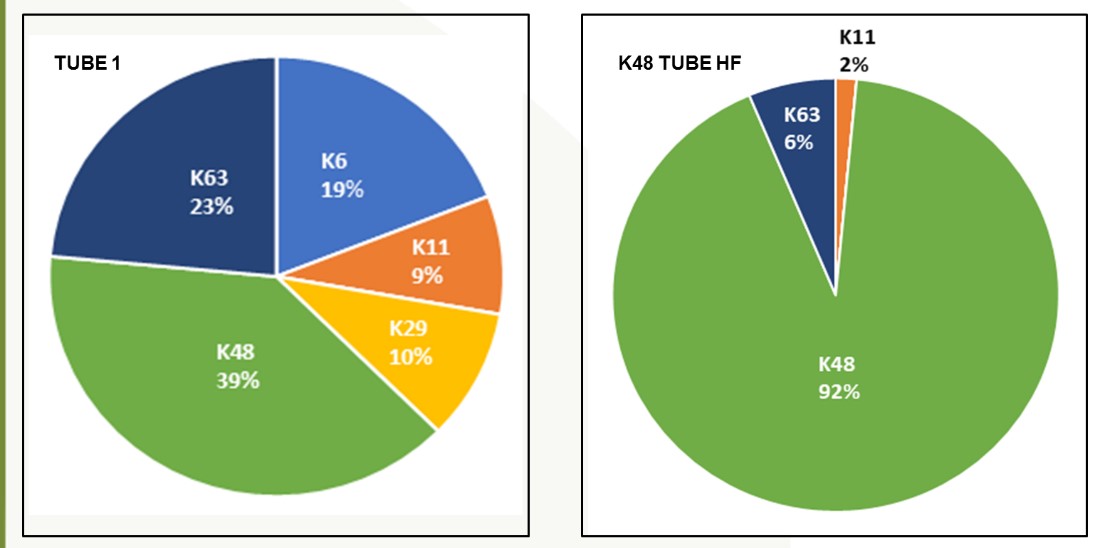
EXPERIMENTAL DATA
In-house data
Examples of data generated using TUBE-based mass spec technology with pan-selective TUBEs. Here the ubiquitinated proteins have been differentiated from whole cell lysate. This methodology is sensitive enough to detect the number of ubiquitin sites on a given protein. The number of ubiquitinated proteins detected were assigned to the number of ubiquitin sites that they carry. In this demonstration over half of the ubiquitnated proteins detected were monoubiquitinated. When studying the effects of a drug or genetic knockout the global shifts in the ubiquitome is a strong place to start your analysis.

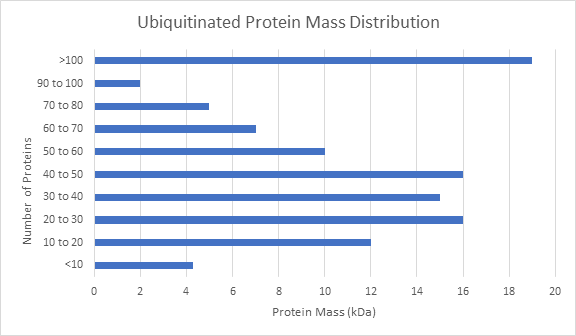
Demonstration of global analysis provided by LifeSensors includes protein mass distribution of all proteins as well as ubiquitinated proteins. The number of ubiquitinated proteins detected were assigned to different intervals of protein mass. Here there is an interesting cluster of proteins around 30 kDa, and over 100 kDa. The ubiquitin pathway is clearly playing a role in clearing and otherwise influencing larger proteins in this experiment.
PUBLISHED DATA
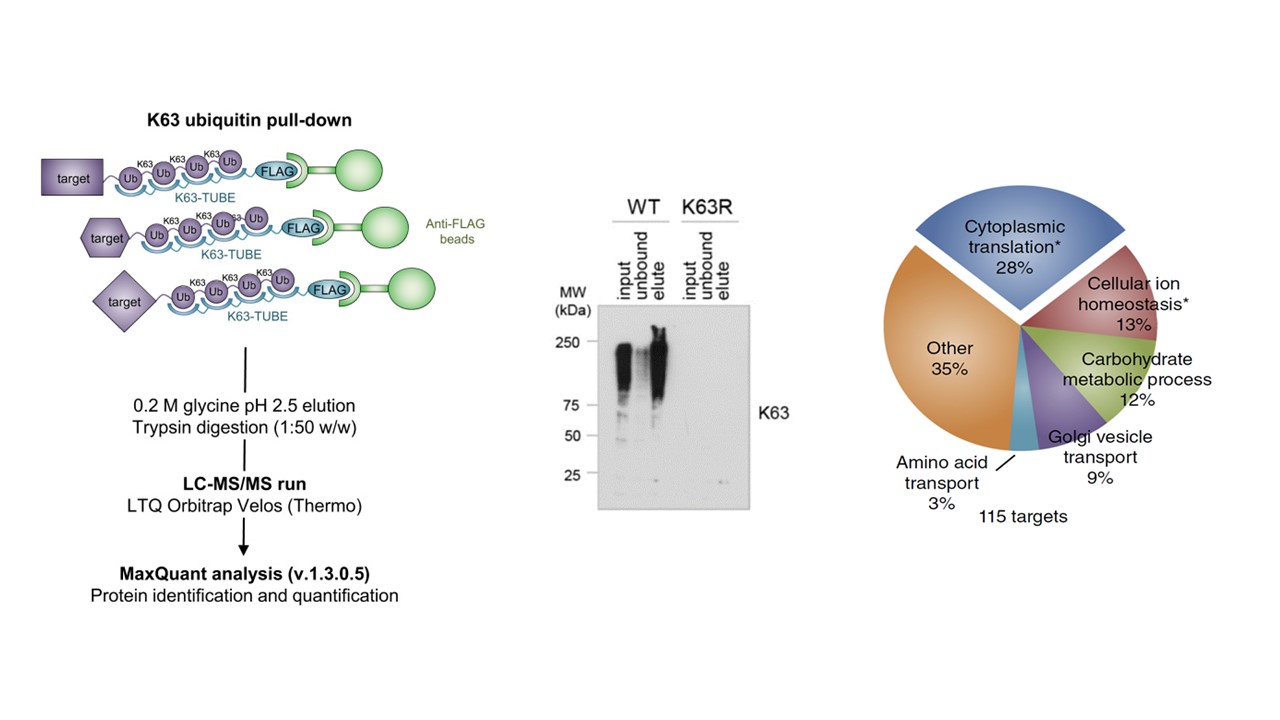
In 2016, Mata-Cantero et al.2 used TUBE-based mass-spectrometry to identify major components of the ubiquitin proteome of both Plasmodium falciparum and its host during different life stages.
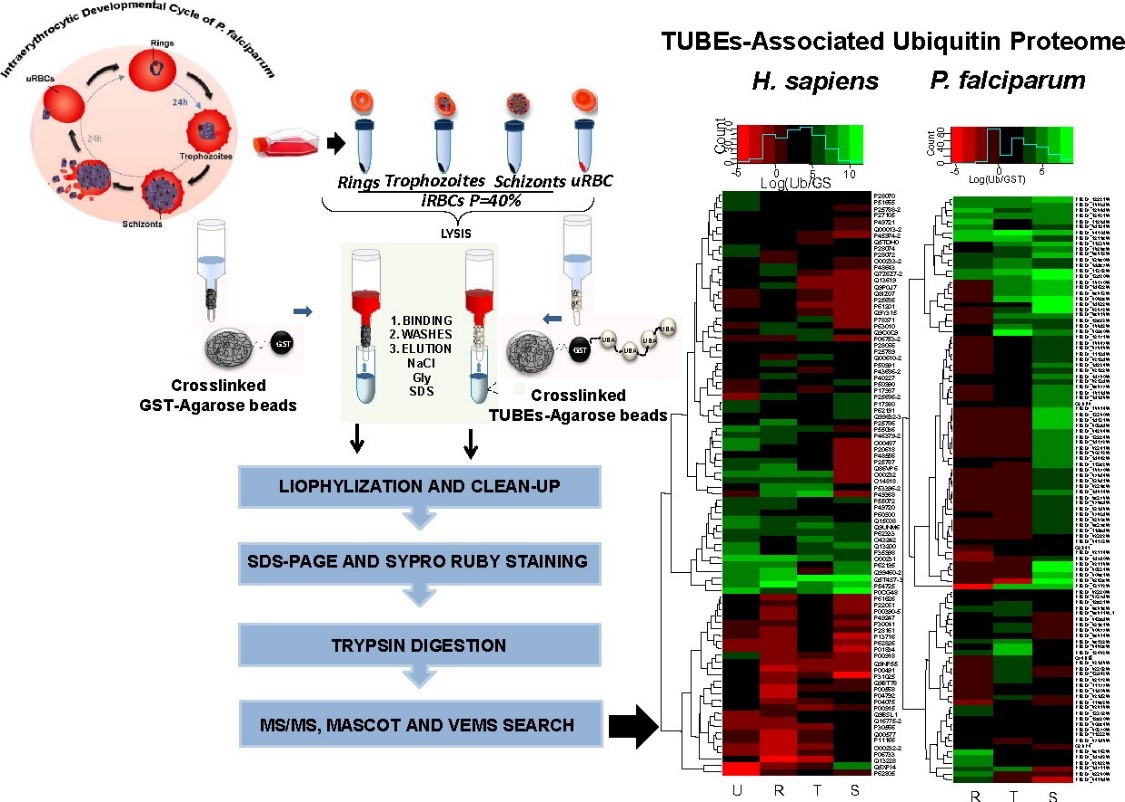
Identification of ubiquitylated proteins using TUBEs-LC-MS/MS method. Intraerythrocytic Developmental Cycle of P. falciparum is shown. Synchronized P. falciparum iRBC at 40% parasitaemia from rings, trophozoites and schizonts stages were collected and frozen. TUBE enriched proteins from iRBC at different stages and uRBC were captured using TUBEs or GST (control) previously crosslinked with DMP to agarose beads. After exhaustive washes, proteins captured were eluted, cleaned by precipitation and resolved by electrophoresis (PAGE). Bands with proteins were analyzed by LC-MS/MS.

DUB Substrate ID
Advantages of Choosing LifeSensors for your Molecular Glue Drug Discovery
- In vitro and in cell assays to identify DUB substrates
- Human protein array enables identification of direct deubiquitination targets
- Substrate Trapping and Proteomic analysis to identify endogenous substrates
- Validation of substrates in orthogonal assays

Whole Cell Proteomics
The Ubiquitin Proteasome System (UPS) controls the principal functions of almost all the cellular proteins of human cells, and failures in this system often contribute directly or indirectly to the pathogenesis of many diseases, including cancer, inflammation, and neurodegeneration. There are ~700 E3 ubiquitin ligases and ~100 Deubiquitinases encoded in the human genome and the functions of most of these E3s and DUBs remain unknown. Recent development of PROTAC drugs to recruit E3 ligases and degrade therapeutic proteins highlight the value of studying E3 ligases. Evaluation of global proteome changes by PROTACs and small molecule drugs is an important tool to establish efficacy and specificity of drug molecules. Lifesensors offers whole cell proteomic services to characterize small molecules and PROTACs.
Service Highlights
- Robust proteomic profiling platform
- Effect of PROTACs, molecular glues and small molecule ligands on global proteome
- Target specificity and Tissue specificity of drugs
- Enables novel target and pathway discoveries
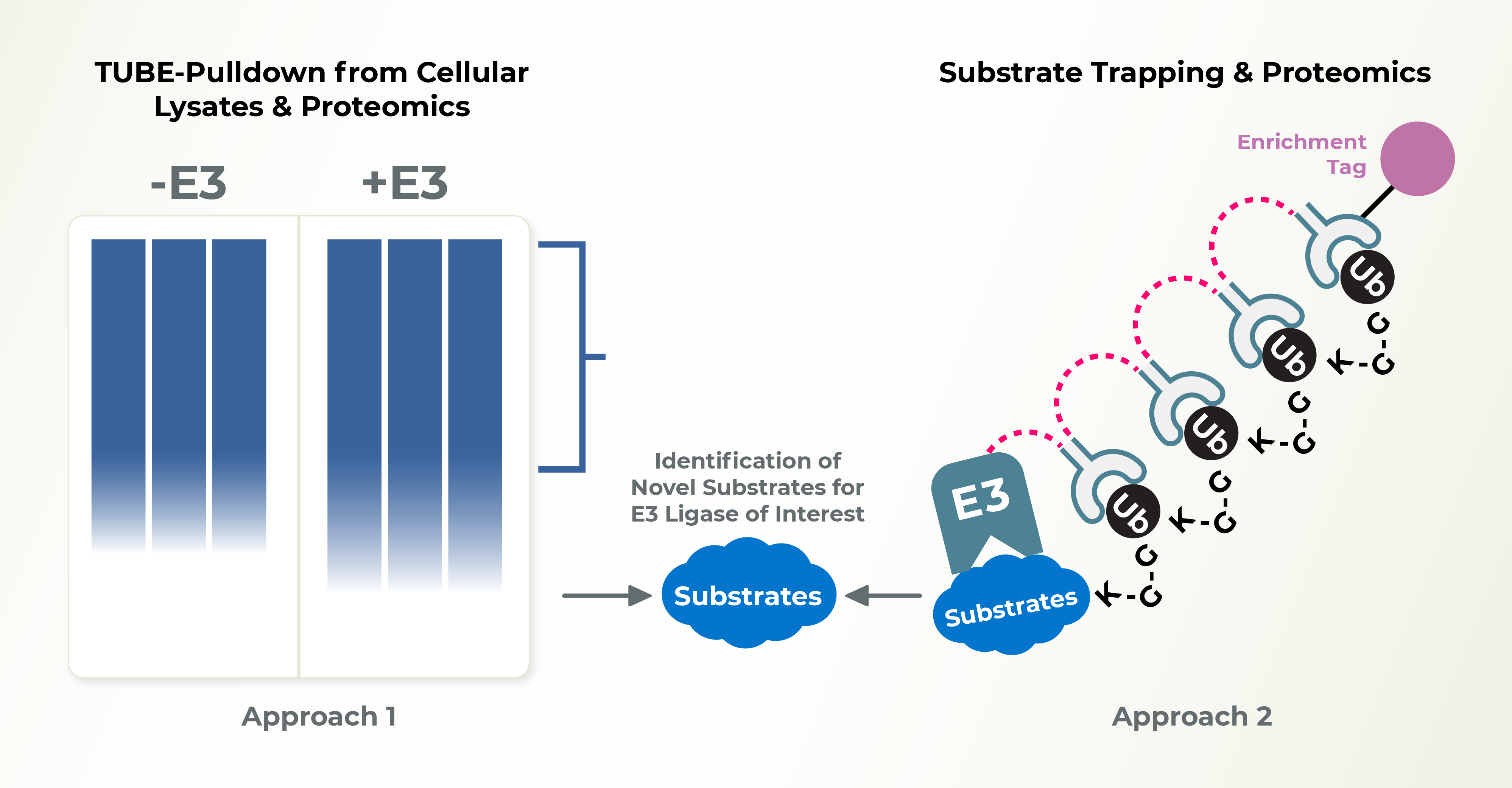
E3 Ligase Substrate ID
Service Highlights
- Cell-based assays to identify endogenous E3 ligase substrates
- With over expression of E3s and/or Knockout/Knockdown of E3s
- Substrate Trapping and Proteomic analysis to identify endogenous substrates
- Validation of substrates in orthogonal assays
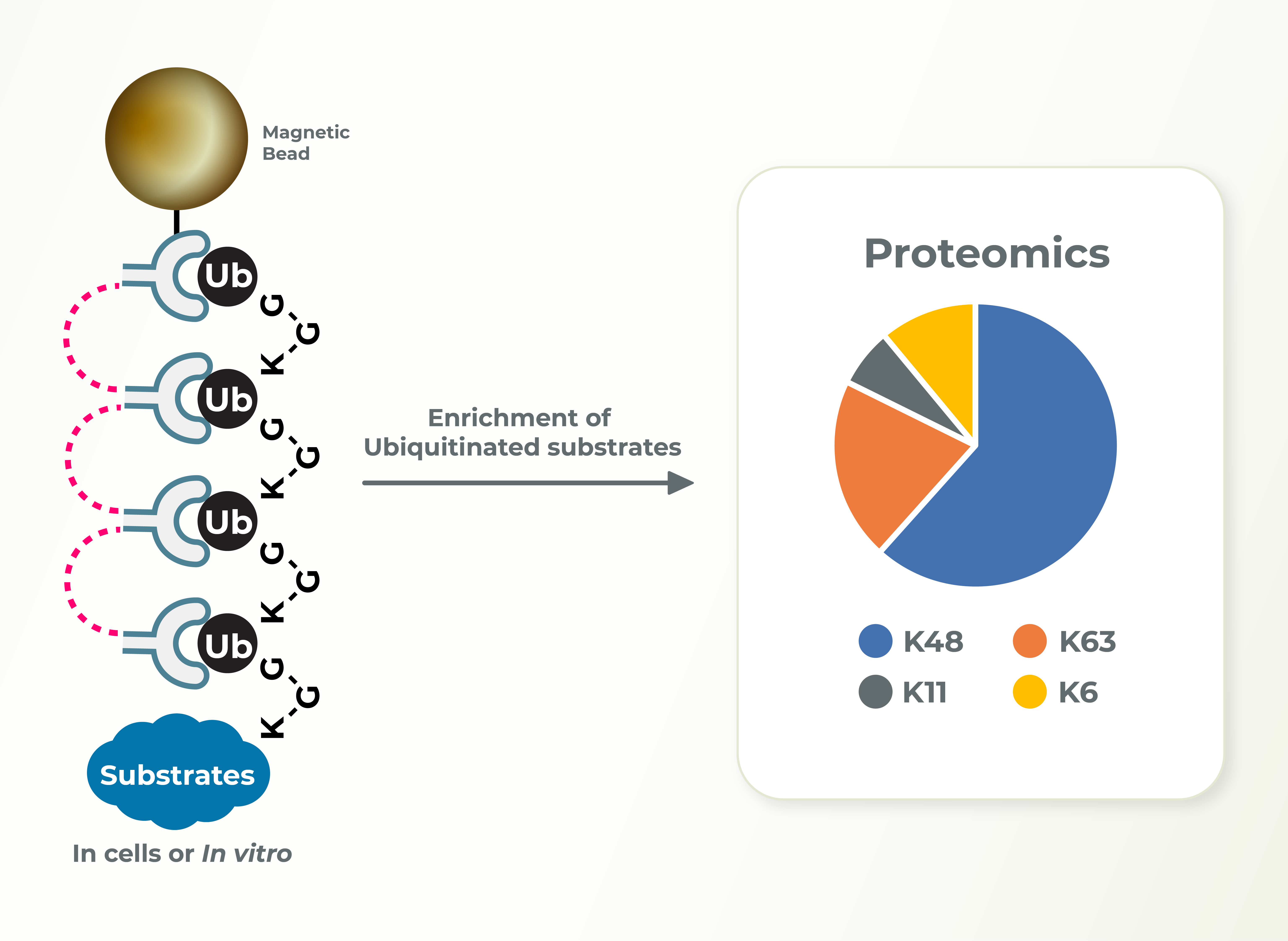
Target Substrate Lysine Ubiquitination ID
Service Highlights
- Cell-based assays to identify endogenous substrate ubiquitination
- Type of ubiquitin chain linkages as well as substrate lysines that are modified with ubiquitin
- With over expression of E3s and/or Knockout/Knockdown of E3s
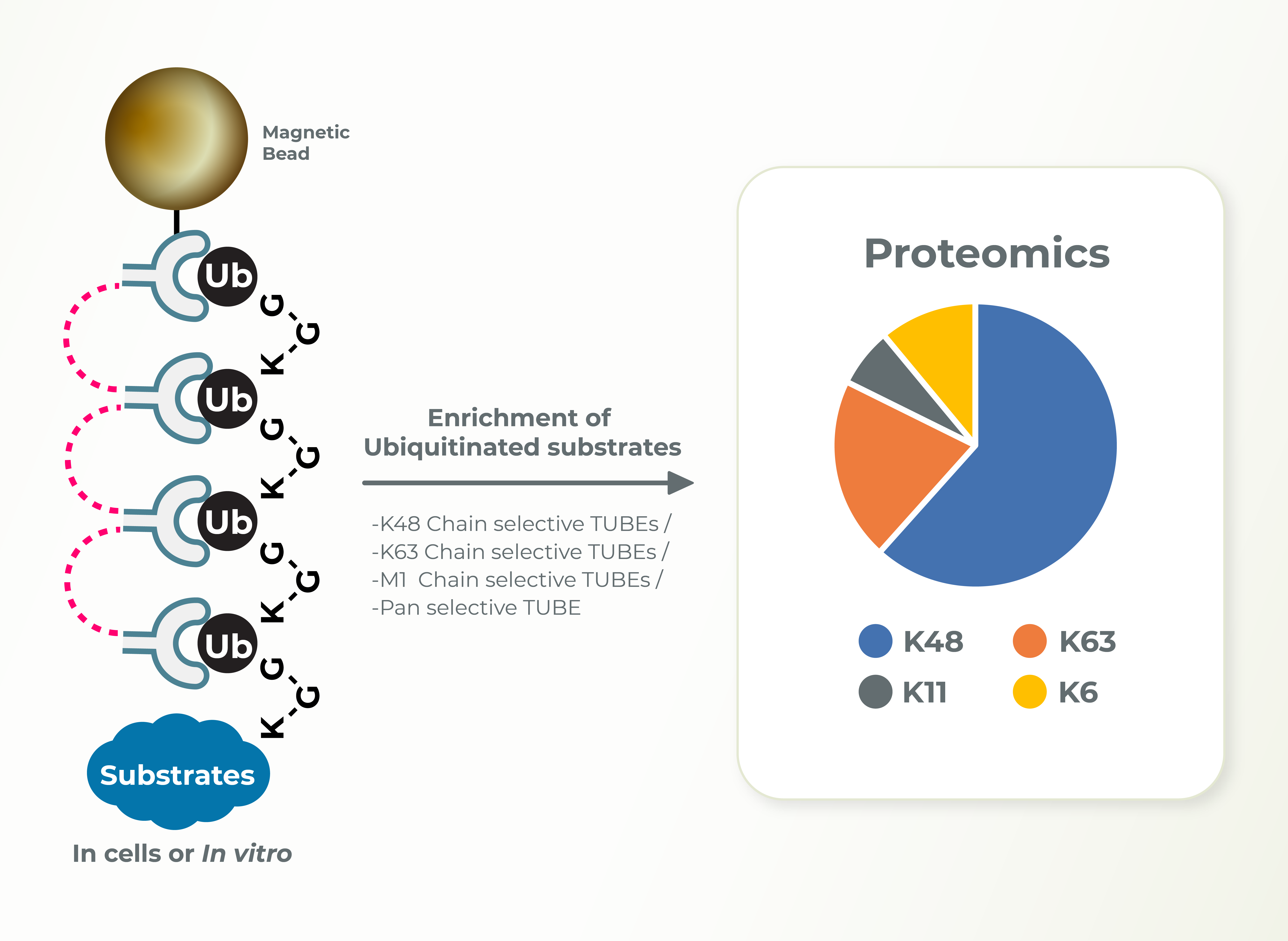
Ubiquitin Chain Diversity ID
Service Highlights
- Cell-based assays to identify endogenous substrate ubiquitination
- Identify the diversity of ubiquitin chain linkages
- Study the effect of PROTACs or small molecules chain diversity

